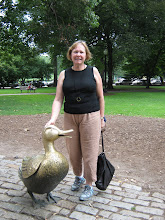Did you know? If all the DNA in your body was uncoiled, it would stretch out to about ten billion miles, which is from Earth to Pluto and back!
DNA is known as the blueprint for life! Found in every cell of every living thing, DNA strands are packed inside a cell's nucleus carrying instructions and genetic information. This date was chosen for DNA Day, to mark the anniversary of the publication of James Watson and Francis Crick’s paper formally announcing their discovery of deoxyribonucleic acid (DNA) in the journal, Nature in 1953. The day also coincides with the completion of the Human Genome Project, which was declared finished on April 25, 2003.
Knowing about DNA allows students to explore genetics and understand why parts of you may appear identical to your great grandparent. While discussing with a Year 2 class the subject of eye colour, I was very surprised how many questions they had about how children in the same family could have different coloured eyes.
For the students I teach there wasn't a lot in the library to help. We started with
Blurb:
Gregor Mendel explains to children the theory of heredity in simple-to-understand language and examples. Regarded as the world's first geneticist, Gregor Mendel discovered one of the fundamental aspects of genetic science: animals, plants, and people all inherit and pass down traits through the same process.
Blurb:
Rosalind Franklin was a Jewish scientist with a remarkable talent as a chemist. Although there were few women working in this field in the 1950s, Franklin, using crystallography, captured an image that held the secret to unlocking the structure of DNA: the double helix.








No comments:
Post a Comment